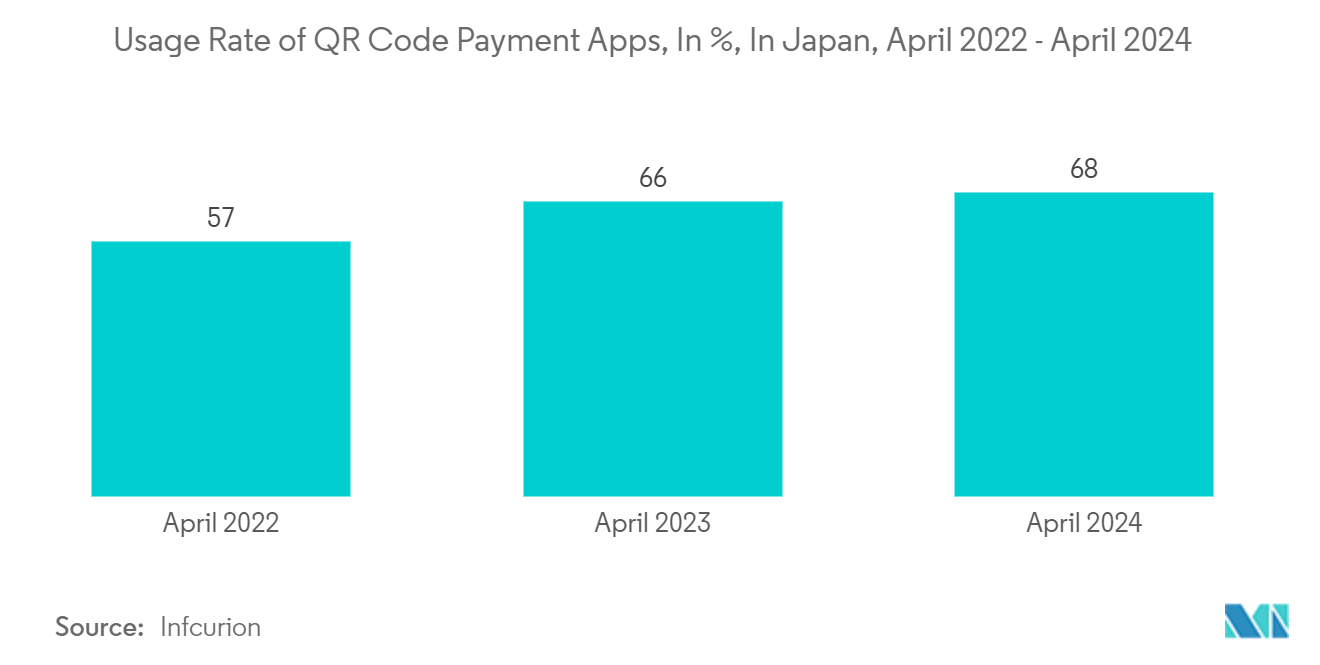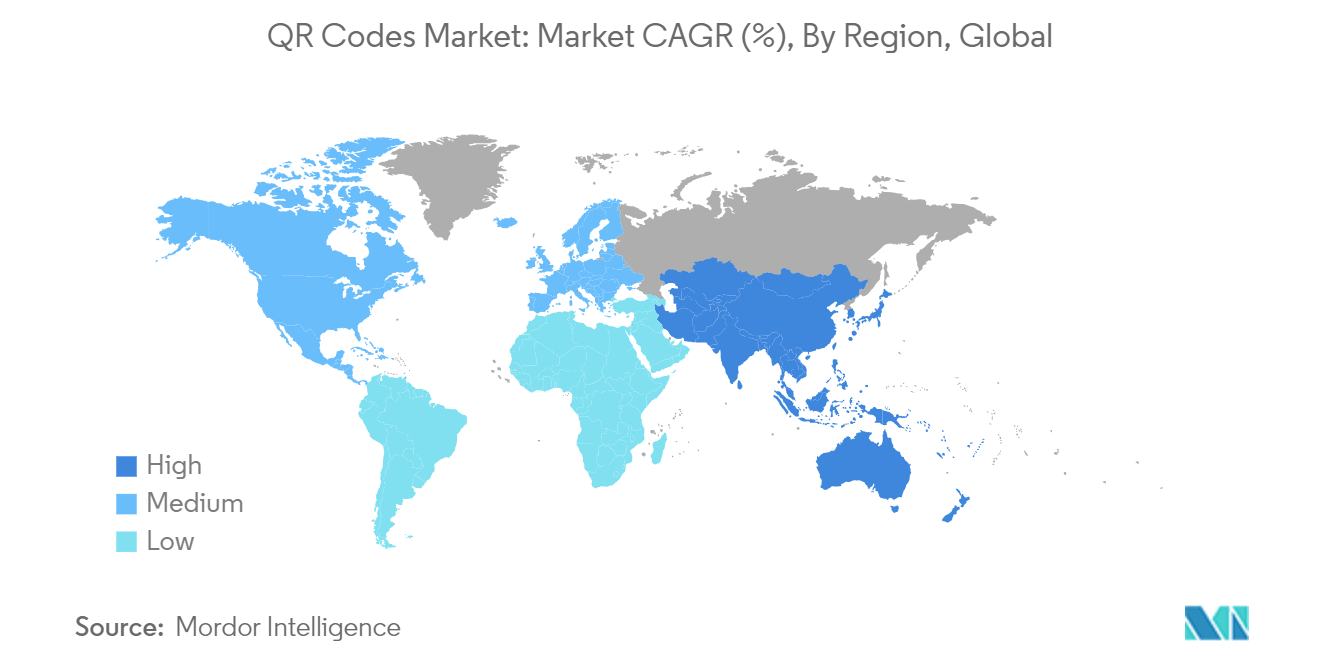Market Trends of QR Codes Industry
The Payments and Transactions Segment is Anticipated to Witness a Significant Growth
- • QR code scanner apps facilitate contactless transactions, allowing quick and secure payments without any physical touch. This approach bolsters security by ensuring sensitive payment details remain in the digital domain.
- • QR codes have revolutionized payment processes, enabling consumers to transact effortlessly. The adoption of QR code-based mobile payments in India has been significantly high. Many mobile users now rely on apps such as Google Pay, Paytm, and PhonePe for their transactions. Given the current trajectory, the QR code-based mobile payment ecosystem is poised for continued growth, ensuring users enjoy a secure, convenient, and efficient means of managing their financial transactions.
- • To that extent, in April 2024, Fintech company Cred launched a UPI-based 'Scan and Pay' service that enables members to use any QR code to make payments from the consumer's bank accounts. The launch marks Cred's foray into the offline payments space dominated by PhonePe, Google Pay, and Paytm. The company claimed that it would be convenient to make offline payments at large format stores comprising supermarkets, fast-food joints, beauty salons, fashion boutiques, and various lifestyle retailers. Such innovations are likely to aid the growth of the market.
- • Furthermore, according to Payments Japan, in 2023, the total value of QR code and barcode payments made at physical and online stores in Japan amounted to around JPY 14.9 trillion (~USD 103.53 billion). QR code payment services emerged as the second-most popular payment method, surpassing electronic money for the second consecutive time that year. Hence, such trends support the market's growth.
- • In April 2024, Infcurion, a developer of a BaaS platform designed to promote financial digitalization, new businesses, and a digital Index, conducted a survey. Around 68% of respondents in Japan reported using QR code payment apps. The number of monthly active QR code payment service users has gradually increased in recent years. Approximately 51% of respondents in Japan used the QR code payment service PayPay. The second most common service was Rakuten Pay, with 23% of respondents stating they used the payment app.

North America is Anticipate to Hold a Significant Market Share
- • Efficient advertising significantly drives the need for QR codes in North America. QR codes elevate user engagement beyond conventional advertising methods. By scanning these codes, users can seamlessly access social media pages, online stores, or contest links, fostering a deeper connection with the brand.
- • The growing demand for sustainable solutions is also driving the development of the North American market. By digitizing user manuals and catalogs via QR codes, businesses can reduce paper usage, save on printing costs, and promote eco-friendly practices. Furthermore, by updating the content of QR codes, companies can avoid the hassle of frequent reprints.
- • As businesses increasingly depend on digital transactions, security has become paramount in North America. QR codes can incorporate encryption and authentication methods, enhancing transaction security and data sharing. Companies use QR codes to authenticate products and prevent counterfeiting, particularly in industries like pharmaceuticals and luxury goods, requiring stringent security measures. This focus on security drives demand for QR codes as a reliable solution.
- • Another factor driving market adoption is the degree to which a QR code supports participation and interoperability across payment types for banks and non-banks and addresses a country’s needs and preferences. Most proprietary QR codes are specific to the payment network for which they were created. This requires the scanning device or app to support scanning QR codes from multiple payment schemes unless the device has separate apps specific to using each proprietary QR code payment scheme. This may be simple for the payment network but can become a friction point for some end users who may have to use multiple apps.
- • To that extent, in August 2024, the Accredited Standards Committee X9 Inc. announced that it would develop a new QR code payments standard. The new standard will establish the content of a QR code for payments, emphasizing interoperability to process a payment digitally. It will include both merchant-presented and customer-presented QR Codes. Encoded in a payment QR code will be all the information necessary to execute a payment without the customer or merchant having to share financial account details.


